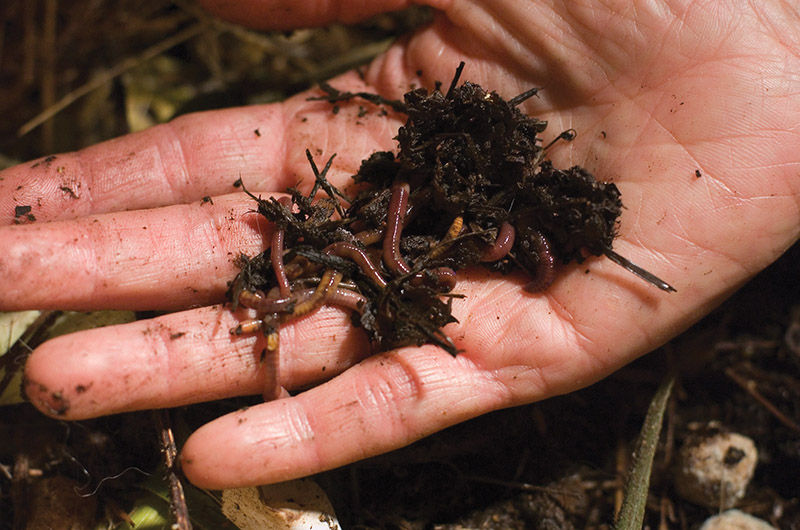Using Red Wigglers for Efficient Organic Waste Disposal
These worms not only boost waste decomposition but likewise produce useful worm castings, which can substantially improve dirt health. Recognizing the subtleties of establishing up a successful worm bin and preserving an optimal habitat is essential for maximizing their advantages.
Advantages of Utilizing Red Wigglers
Among one of the most engaging benefits of utilizing red wigglers for natural waste disposal is their amazing effectiveness in composting. These worms, scientifically recognized as Eisenia fetida, are particularly adjusted for breaking down organic products, enabling them to process waste approximately two times their body weight each day. This rapid decomposition not just accelerates the composting process however also produces nutrient-rich worm spreadings that significantly boost soil high quality.
Additionally, red wigglers add to a reduction in garbage dump waste. By diverting natural materials from landfills, they help reduce methane discharges-- a potent greenhouse gas. This eco-friendly benefit is essential in the fight versus environment change.
Furthermore, red wigglers are low-maintenance and can thrive in numerous settings, making them easily accessible for both novice and experienced composters. Their ability to reproduce quickly guarantees a consistent populace, assisting in continuous waste handling.
Establishing Your Worm Bin
Producing a reliable worm container is vital for optimizing the advantages of composting with red wigglers. Ensure the container has adequate water drainage openings to avoid excess wetness, as red wigglers prosper in a damp however not soggy setting.
(red wigglers for sale near me)Following, prepare the bed linens product, which serves as the worms' environment and food resource. The container should be positioned in a dark, temperature-controlled location, preferably in between 55 ° F and 77 ° F, to keep worm activity.
As soon as the bin is set up, present the red wigglers, permitting them to accommodate to their brand-new setting. A properly maintained container will not just sustain the health and wellness of the worms however additionally facilitate effective disintegration of organic waste.
(eisenia fetida worms for sale)
What to Feed Red Wigglers
An understanding of the ideal diet for red wigglers is essential for keeping a healthy and balanced worm populace and maximizing composting efficiency. These products not just provide essential nutrients however likewise add to the wetness equilibrium within the worm bin.
It is vital to avoid specific foods that can harm the worm population. Red wigglers should not be fed meat, dairy products, oily foods, or refined things, as these can bring in insects and develop unpleasant odors. red wigglers. In addition, citrus fruits and zesty foods should be reduced, as their acidity can be damaging to worms
Keeping an eye on the worm container for food usage rates will certainly assist Full Article make sure that red wigglers are receiving a sufficient diet while preserving an efficient composting environment. Appropriate feeding methods are necessary for cultivating a prospering community within the worm container.
Keeping Your Worm Habitat
A well-kept worm habitat is crucial for the health and efficiency of red wigglers. To ensure optimal problems, it is crucial to keep an eye on temperature, moisture, and oygenation within the worm bin. Red wigglers flourish in a temperature array of 55 to 77 degrees Fahrenheit. Surpassing this array can worry the worms, so it is necessary to position the bin in a suitable place far from direct sunshine and extreme temperatures.
A great rule of thumb is to maintain wetness at approximately 70% to 80%. If the bed linens ends up being also damp, it can lead to anaerobic problems that are hazardous to the worms.

Using Worm Castings in Horticulture
Rich in nutrients and useful microbes, worm castings function as a phenomenal natural plant food for gardening. Generated with the digestive system procedures of red wigglers, these castings consist of a variety of essential nutrients, including nitrogen, phosphorus, and potassium, which advertise durable plant growth. Unlike synthetic fertilizers, worm spreadings provide a slow-release system, making sure that nutrients are offered to plants over an extensive period, thus reducing the threat of nutrient leaching and dirt depletion.
In enhancement to vitamins and mineral web content, worm spreadings enhance dirt framework and oygenation, enhancing moisture retention and drain. The microbial life present in worm spreadings aids to suppress pathogens and advertises a healthy dirt ecosystem, more benefiting plant health. When included into the dirt or utilized as a leading dressing, worm spreadings can significantly boost seed germination prices, root growth, and total plant vitality.
For optimal outcomes, garden enthusiasts must use worm castings at a rate of 1-2 inches per square foot, blending them right into the dirt or integrating them right into potting mixes. Overall, using worm spreadings is an eco-friendly technique to enhancing dirt fertility and making sure prospering garden settings.
Final Thought
